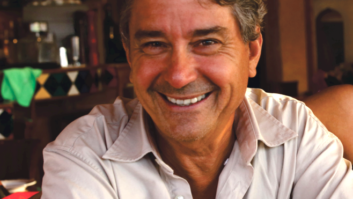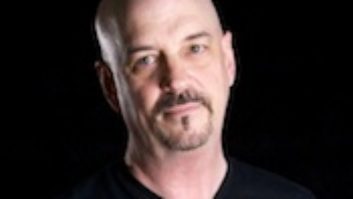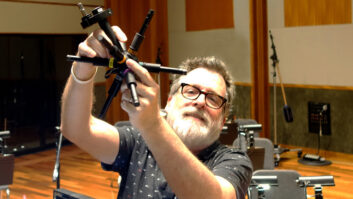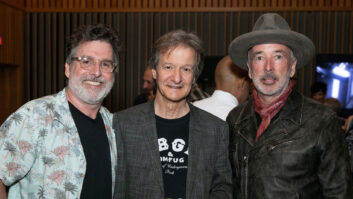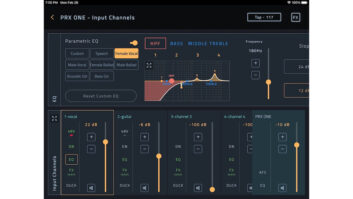My parents both grew up on farms in Saskatchewan. My grandparents were homesteaders who moved to the prairies at the turn of the last century; there, they dug out and built sod homes to protect themselves from the brutal winter cold and oppressive summer heat before they could afford to build a real house. Mom’s family had 11 kids; dad’s 13.
At the age of 23, after graduating as an engineer, my father was recruited by Bell Canada. My parents moved to Montreal to follow his job. He retired 35 years later at the age of 58. He had a terrific career, raised a family, was an avid golfer and ended up buying a house on the 9th hole of a Jack Nicklaus-designed 27-hole golf course in Ottawa. Dad used to say, “With golf, you don’t want to overdo it—so I don’t play on Thursdays.” Anyway, back around 1958, he had an idea for inline skates, and his sketches looked very much like the skates that are now sold around the globe. I think he always wished he had pursued his idea, but life got in the way.
Around 2001, I got a call from Little Mountain Studios, famous for recording artists such as Bryan Adams, Aerosmith and Bon Jovi. They wanted to check out the Radial JD7 guitar amp distro, so I brought one to them. While the engineers conducted tests, I was allowed to snoop around—and I jumped at the chance. Little Mountain Studios was renowned for its bass sound, yet it had the same Urei midfield monitors as found in most studios of the era. This intrigued me. Why did this studio have better bass reproduction than the others?
I found a door that accessed the inside of the wall separating the studio and the control room, and inside were two huge concrete pillars used to secure the monitors. A lightbulb went on in my head, as I knew from my years of installing sound systems that if you secured the bass cabinets to the floor, you would get a punchier low-frequency reproduction.
Related: The Aha Moment: Creating Demand, by Peter Janis, July 30, 2019
Driving back to the office, I thought about the common practice of mounting nearfield monitors on a piece of foam to eliminate coupling with the desk, avoiding unwanted resonance or cancel-out frequencies. I was conflicted. If we knew that securing the bass loudspeaker resulted in better bass, like I’d seen at Little Mountain, why would we “float” the loudspeaker on foam? There had to be an acoustic cost to that approach.
Having designed DJ setups for clubs, I also knew that the only way to prevent over-the-top bass from making a turntable skip was to mount it on a solid block of stone; seismic sensors and other test equipment follow the same science. With that in mind, I set out to find a material I could mount on top of foam that would stabilize the loudspeaker. I started by testing concrete, but quickly realized it was too dusty. Then I tried a marble slab and it worked! The bass was more defined, transients were improved and imaging was clarified. I asked about pricing, however, and the cost was prohibitive.
Then, as with everything, life got in the way; we had just launched a bunch of Radial products, the Primacoustic brand was going through changes, and we had acquired Reamp, so these “isolators” got put on the back burner.
One day Jay Porter, our product manager, came into my office asking, “Why have we not put these on the market?” He had taken the isolators home and was impressed. The idea came off the back burner; soon we got our metal shop to produce a variety of metal splints in different sizes and thicknesses. Through testing, we came to the conclusion that for the stabilizer to work, the splint had to be approximately a quarter of the loudspeaker’s weight. We added a thin piece of non-slip neoprene to the top and called it the Recoil Stabilizer.
Knowing full well that the idea would be pooh-poohed by the growing crowd of opinionated online naysayers, I figured I’d better make sure we had plenty of “market support” before we launched the product. I made up 20 sets of Recoils and sent them to the most influential recording engineers I could find. This list included Al Schmitt, Bruce Swedien, Joe Chiccarelli, Ed Cherney, Daniel Lanois and Frank Filipetti, among others. I figured that if I could get seven to support the idea out of 20, we would be good to go. Of the 20 units we sent out, 19 of the engineers sent back glowing reports; the other one had lost them in a studio move. When we announced the Recoil Stabilizer, the naysayers did their thing as predicted, bad-mouthing the product, but the internet came to the rescue, pointing out that “Al Schmitt would not support a product if it did not work.”
Related: The Aha Moment: Necessity Is the Mother of Invention, by Peter Janis, Sept. 26, 2018
The best ideas come from paying attention and asking questions. The tough part is following through, because life can sometimes get in the way. Too easily we put these ideas in a file folder with the intention of eventually getting around to bringing them to life. Once an idea has been hatched, I tend to push the idea out and then sell it to the market. I cannot tell you how many times people have stopped by the Radial booth and said, “I don’t know how you guys came up with this widget! I didn’t know I needed it until I saw it. Now I don’t know how I can live without it.”
That’s what happened with the Recoil Stabilizer. Over the next 15 years, we literally sold thousands of them, and did so for one reason: We pursued the idea despite life almost getting in the way.
Want more stories like this? Subscribe to our newsletter and get it delivered right to your inbox.

